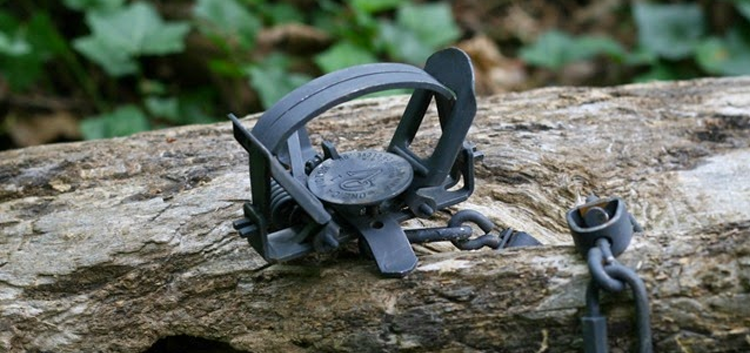
Types of traps
Modern traps fall into two main categories: “lethal traps”, which are designed to kill the animals very quickly upon capture, and “restraining” traps, which hold the animals, alive, until the trapper arrives to dispatch them.
CONIBEAR, SNARE AND OTHER LETHAL TRAPS
Whenever possible, trapping systems are designed to kill captured animals very quickly — generally within 300 seconds or less. These traps work very much like a mousetrap that you might set in your home, only larger and more powerful in order to humanely dispatch larger animals. Lethal traps can now be used for most of the furbearing animals taken in North America, including muskrat, beaver, marten, and many others.
98% of fur animals trapped in Canada are now taken with quick killing systems.
– Pierre Cana-Marquis, furbearer and trap-research coordinate
LEG-HOLD (FOOT-HOLD) RESTRAINING TRAPS
Some animals are too large or too wary to be taken in lethal (“quick-killing”) traps. New restraining (“live-holding”) devices have been developed to capture large predators including coyote, lynx, bobcat, or fox. These restraining devices have been designed to hold the animals with minimal injury until the trapper arrives to dispatch them.They are generally killed with a small-caliber firearm; that is the method recommended by trapper-training manuals across North America.
Restraining traps are also used by biologists to capture and release animals unharmed, for research (e.g., with radio collars to monitor the animals’ movements) or for relocation and reintroduction into regions where they were formerly extirpated (e.g., wolves that were intentionally eliminated from some parts of the US to protect livestock.)
THE STEEL JAW TRAP MYTH
The steel-toothed traps that are shown in activist campaigns were banned in most regions decades ago. Modern “leg-hold” (more accurately “foot-hold” or “restraining”) traps are designed to hold animals with minimal injuries. (See: Restraining Traps, above.) New traps have many features to prevent injuries, including padded and “offset” jaws that don’t close completely.
PREVENTING “NON-TARGET” CAPTURES
The way in which modern traps are designed and set allows trappers to capture the species they are targeting, and to avoid unwanted, “non-target” species. For example: lethal traps for capturing and killing marten (a cousin of the mink and weasel) will be set in a box placed on a tree or inclined pole above the ground so dogs (attracted by the bait) will not have access or be injured. Similarly, trap size and trigger pressure, set location and timing are some of the variables that trappers learn in their training courses to ensure that only targeted animals are taken.






